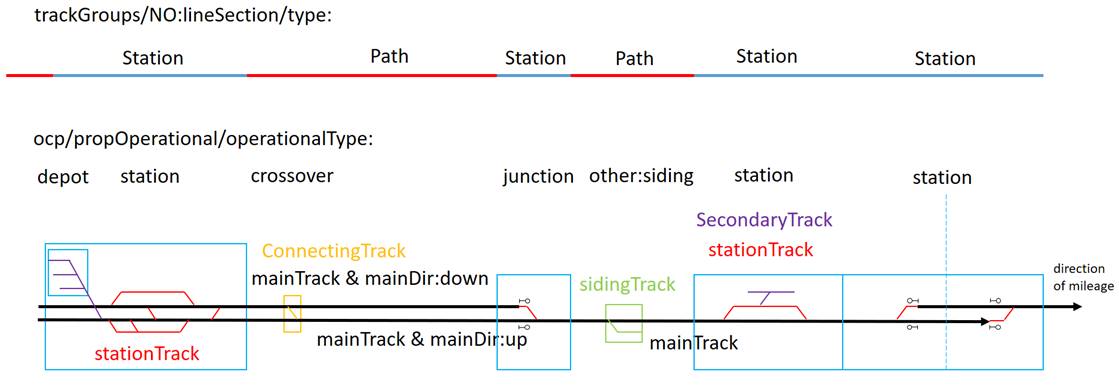| Re: Semantic of @type in <track> and mapping to national usage? [message #1597 is a reply to message #1596] |
Tue, 06 June 2017 15:47   |
 Torben Brand
Torben Brand
Messages: 158
Registered: March 2016
|
Senior Member |
|
|
=== Norwegian usage / Norwegische Anwendung ===
The track types are defined in Norway according to definition in the
train operations regulation (Togremføringsforskriften)
https://lovdata.no/dokument/SF/forskrift/2008-02-29-240. The operations
regulation divides the line into two types. Either a station or a path
(between stations). A station is defined where signals are received or
given. The station border is at the home signals. A station has three
types of track: main (hovedtogspor), station (togspor) or secondary
(øvrige). The distinction is dependent on the route information. The
main track is the track to drive into the station in the switches normal
position. All other tracks that have (main signal) routes going over
them are station tracks (togspor). All other tracks (without main signal
routes, like shunting routes or no routes [like shunting areas]_) are
secondary tracks (øvrige spor).
The path has also three types of track: main (hovedspor), siding
(sidespor) and connection (not defined in Norway, but sometimes refered
to as "forbindelsesspor"). The main track is the main track on the path.
To distinguish between the two tracks on a double track line they are
referred to in the direction of increasing mileage as right main track
(høyre hovedspor) or left main track (venstre hovedspor). This
corresponds in railML to dir="up" (right/høyre) and dir="down"
(left/venstre).
For the ocp operational type other:siding (sidespor) we have the track
type siding (sidespor). A siding is in Norway defined as an ocp on the
path that is not a station. The ocp has to have an additional track of
type siding track. Usual sidings in Norway are factory tracks on the
path, for loading and unloading industrial products and timber. The
switch leading to the siding track needs to be locked. We do not have
connecting tracks in Norway. In case we would have a track connection
between the two main tracks on a double tracked line that does not have
route og over it, we would call it a connection track (forbindelsesspor).
In the case where a single track becomes a double track at an ocp
operational type junction or station. Here the main track that goes over
the switch in the normal position stays main track all the way through
the station. The track in the diverging switch track (not the switches
normal position) is the station track (togspor). The two tracks meet at
the exit signal.
The same happens in the special case where you have no main track that
goes unbroken through a station. There the main tracks overlap and end
at the exit signal on the other side of the ocp cross section. Then the
track continues as type station track.

[Updated on: Tue, 06 June 2017 15:58] by Moderator Report message to a moderator |
|
|
|